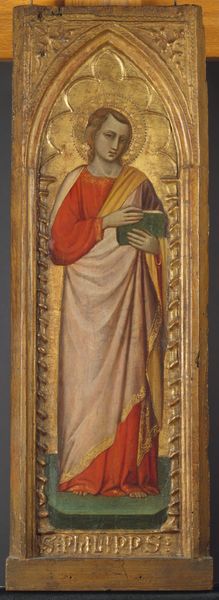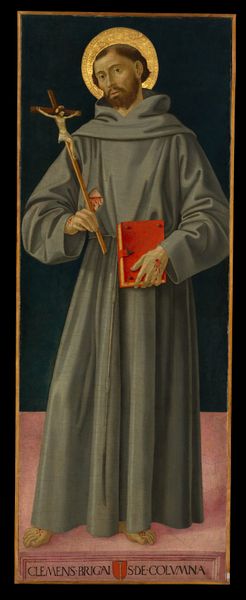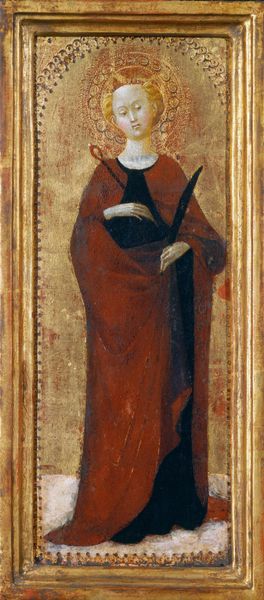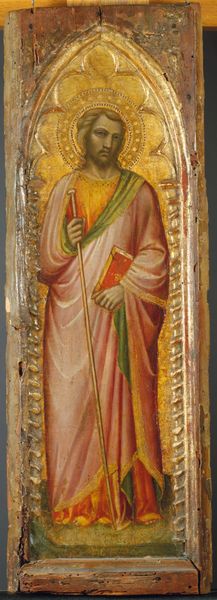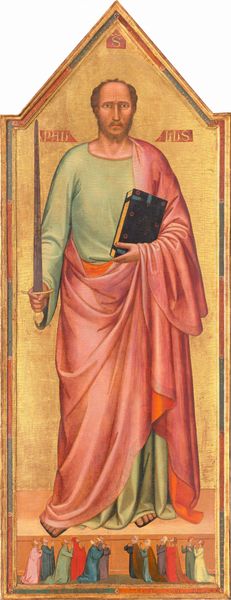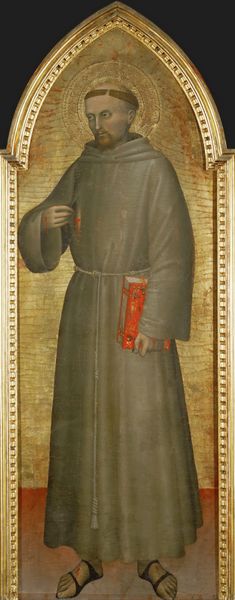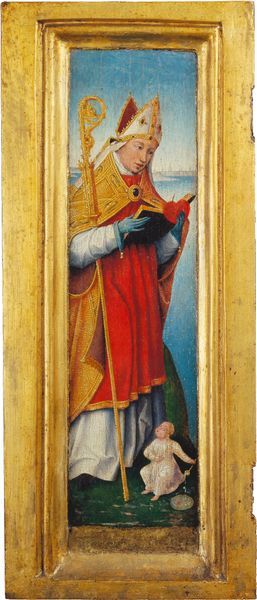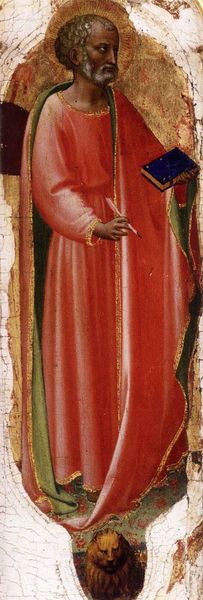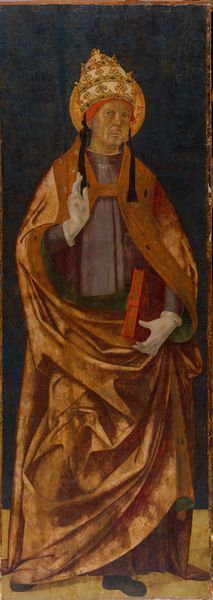
panel, tempera, painting
#
portrait
#
medieval
#
panel
#
tempera
#
painting
#
figuration
#
oil painting
#
earthenware
#
italian-renaissance
#
watercolor
Copyright: Public domain
Editor: Here we have Álvaro Pires de Évora’s “Santo Diacono,” painted in tempera on a panel in 1431. It's striking how frontal and composed the figure is. What do you see in this piece? Curator: Beyond its formal qualities, this work speaks volumes about the construction of power and identity within the church. Think about the intense red of his robe, the gold embellishments, and the halo – visual cues designed to project authority. But what is the impact of such portrayals on marginalized communities? Does this image invite devotion or reinforce existing hierarchies? Editor: I hadn't considered the implications beyond religious iconography. Is that something specific to this particular saint? Curator: More broadly, the Italian Renaissance was steeped in the politics of patronage and the consolidation of religious doctrine. How did artists negotiate these complex dynamics? What choices did they make, consciously or unconsciously, that upheld or challenged the status quo? How might contemporary viewers respond to its potential to reinforce, even unintentionally, existing imbalances of power and privilege? Editor: So, even a seemingly straightforward religious image can reveal so much about the social and political context in which it was created. Curator: Precisely. And by interrogating those contexts, we can foster a more nuanced and critical engagement with art history. Editor: This has made me rethink my initial impression; thank you. Curator: It's been a pleasure; keep asking questions.
Comments
No comments
Be the first to comment and join the conversation on the ultimate creative platform.
